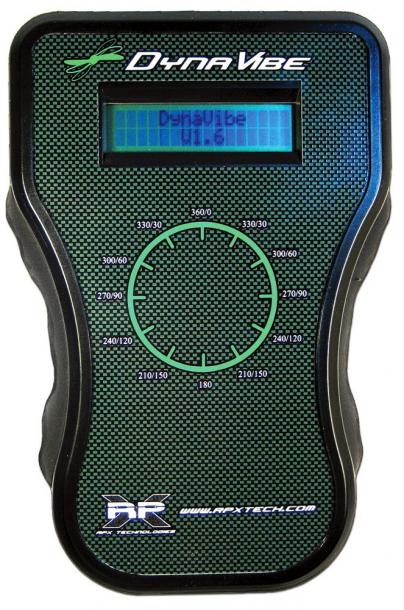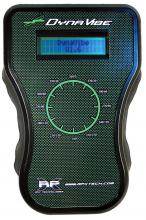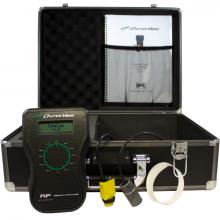DYNAVIBE CLASSIC PROP BALANCER




448 500
₽
Описание
DynaVibe Classic
"The Affordable Dynamic Prop Balancer"
The DynaVibe Classic is an economical, state-of-the-art dynamic propeller balancer designed specifically for the aircraft industry. The DynaVibe Classic displays the magnitude and phase of propeller vibration allowing precise weight adjustments for balanced and smooth engine operation.
Attention: DynaVibe Products may not be cancelled or returned.
- Economical - including:
- Dynamic Balancer
- Accelerometer with 30 ft cable
- Optical Pickup and Reflective Tape
- Carrying Case
- No hidden costs or additional items to buy!
- Accurate - Reports RPM, Vibration Magnitude, Vibration Phase Angle
- Results - Reduce vibration levels to reduce wear on engine components and instruments. Enjoy a smooth flight!
A properly balanced engine installation offers a number of advantages over unbalanced equipment. The most significant advantage is in the longevity of components associated with the power plant. In many cases high vibration levels have lead to premature failure of critical engine components. Engine accessories, engine mounts, firewalls, and instruments are also susceptible to vibration damage and premature failure.
Standard VS Rotorcraft Version:
The rotorcraft version is the same as the aircraft version with additional features:
- The rotorcraft version includes an extra accelerometer to reduce accelerometer position movements between flights.
- The rotorcraft version includes push-to-talk switch activation of the averaging button, to allow your hands to remain on the controls.
- Note: The rotorcraft version also works on propellers
NIST Option NIST is the National Institute of Standards and Technology: an agency in the Technology Administration that makes measurements and sets standards as needed. The NIST traceable option is available for those that are working on certified aircraft.
Important Info
- The helicopter version will also work for fixed-wing aircraft.
- There are no physical differences between NIST and non-NIST. The only difference is that the NIST unit comes with a certificate of calibration showing that it has been compared to a NIST standard device.
- One year full warranty
- NIST calibration is required annually for certified aircraft/rotorcraft.
| Арт. | Описание | Цена | Add to cart form |
|---|---|---|---|
| 05-04532
|
DYNAVIBE PROP BAL - AIRCRAFT
|
$
1 495
|
|
| 05-04533
|
DYNAVIBE CLASSIC PROP BALANCER
|
$
1 645
|
|
| 05-04534
|
DYNAVIBE PROP BAL ROTORCRAFT
|
$
1 995
|
|
| 05-04535
|
DYNAVIBE PROP BAL ROTO / NIST
|
$
2 190
|
Отзывы Оставить отзыв
Вопросы и ответы

Отзывы ещё не добавлены